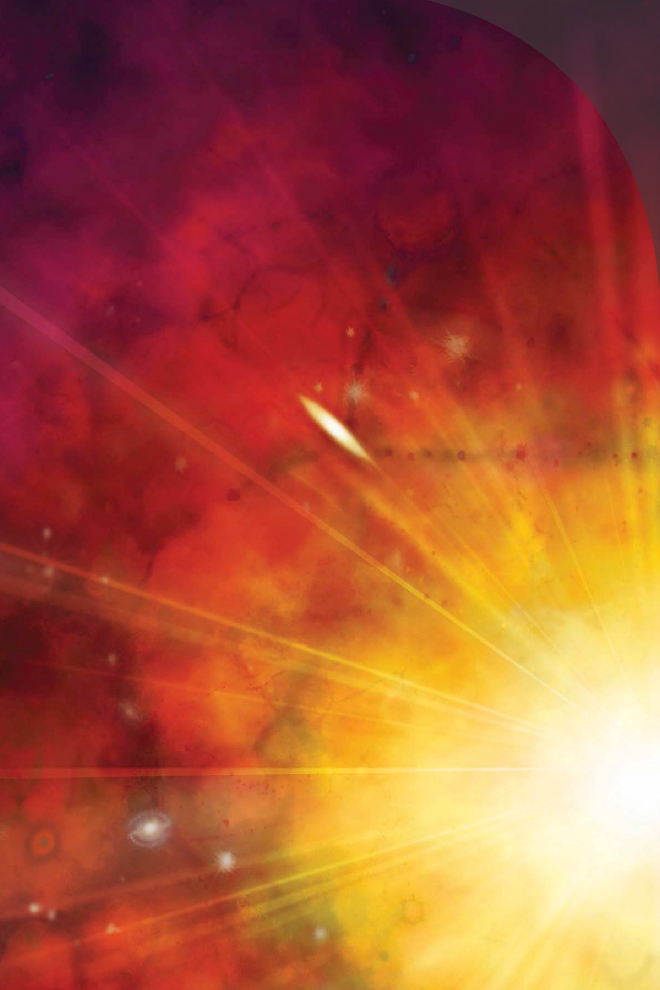

In the birth of the universe, the universe had an enormous energy density and expanded rapidly.
THE BIG BANG THEORY
Introduction: Cosmological Curiosity
Since the beginning of recorded human history, people have sought explanations for where we come from and why Earth and the sky are as they are.
Has the universe been this way forever? Did it have a moment of origin? What is it made of? What principles governed its shape and movement?
The study of the history and evolution of the universe is called cosmology. In the early years of human civilization, our ancestors’ knowledge of the world was limited to their local environment, weather phenomena, and what they could observe in the sky with their own eyes. Their cosmologies described the separation of Earth and the sky, the creation of the first gods and men, and the formation of our planet as we see it today. These narratives were deeply mythological and depended on gods and supernatural phenomena to explain the creation and evolution of the world.
Over the course of millennia, the way these cosmologies were created evolved. As intellectual discourse grew in the academies of ancient Greece, now-famous philosophers set forth sweeping descriptions of the universe’s structure and characteristics. However, while cosmology describes the evolution of the universe over time, the influential philosophers Plato, Aristotle, and Ptolemy believed that the universe beyond Earth was perfect and unchanging.
After the Middle Ages, Europe underwent a period of artistic, cultural, and scientific innovation known as the Renaissance. From this surge of progress came the Scientific Revolution, an era in which old notions of perfection and stasis (lack of change) were broken down by scientists such as Nicolaus Copernicus, Galileo Galilei, Tycho Brahe, and Johannes Kepler. New methods for conducting science in a more observation-focused, testable manner grew as well.
Developments in optics and, subsequently, telescopes significantly aided astronomers in the Scientific Revolution and beyond. As telescopes grew in power and resolution, they played an increasingly significant role in shaping our cosmology throughout the 1800s up to modern day. So too did the advancements in understanding the properties of light and the electromagnetic spectrum, including the new field of spectroscopy discovered in the 1800s. With more ways to measure the light coming from outer space and the ability to garner information from that light, our ability to learn about deep space accelerated.
In the early 1900s, Edwin Hubble discovered that there are galaxies beyond our own. When the physicist Albert Einstein introduced his theory of general relativity, it raised big questions about the history of the universe. Was it expanding? Was it contracting? And if it was changing, what was it like in the past?
Though many scientists had preferred models of an unchanging universe because considering a moment of creation came too near religious narratives, twentieth-century scientists were forced to consider the possibility that the universe had a finite age and was changing over time.
The physicist Georges Lemaître proposed an expansion model of the universe that began with the decay of a primordial “super atom.” Though originally ignored or scorned by other physicists, another discovery by Hubble showed that the universe really was expanding over time. This finding had a clear implication: if galaxies are moving apart, they must at one point have been closer. Using the speed at which galaxies were receding, astronomers could calculate a time at which all galaxies were in one small, dense region of space.
That small, dense region was perhaps not exactly the super atom Lemaître had proposed, but it spurred astronomers onward to discover just what did happen at that time.
In the late 1940s, George Gamow and Ralph Alpher proposed a new version of the big bang theory, as it later came to be called. Gamow and Alpher suggested that the universe began in a dense, highly energetic state from which elements (and thus matter) formed. Discoveries through the following decades lent more details, as well as some major revisions, to the big bang theory, but that basic premise stands: according to the standard model of cosmology, the universe began 13.8 billion years ago in a highly concentrated region of space that underwent rapid inflationary expansion.
Though the big bang model of cosmology is accepted as the standard model, there is still much to learn about the beginning of our universe. Physicists are studying the formation of matter and antimatter; the early, rapid inflation of the universe; and the mysterious dark matter that shaped the stars and galaxies we know today. Others are looking at whether our universe is the only universe out there. The big bang is an exhilarating theory of the beginning of our universe, and scientists are continuously looking for more details and supporting evidence.